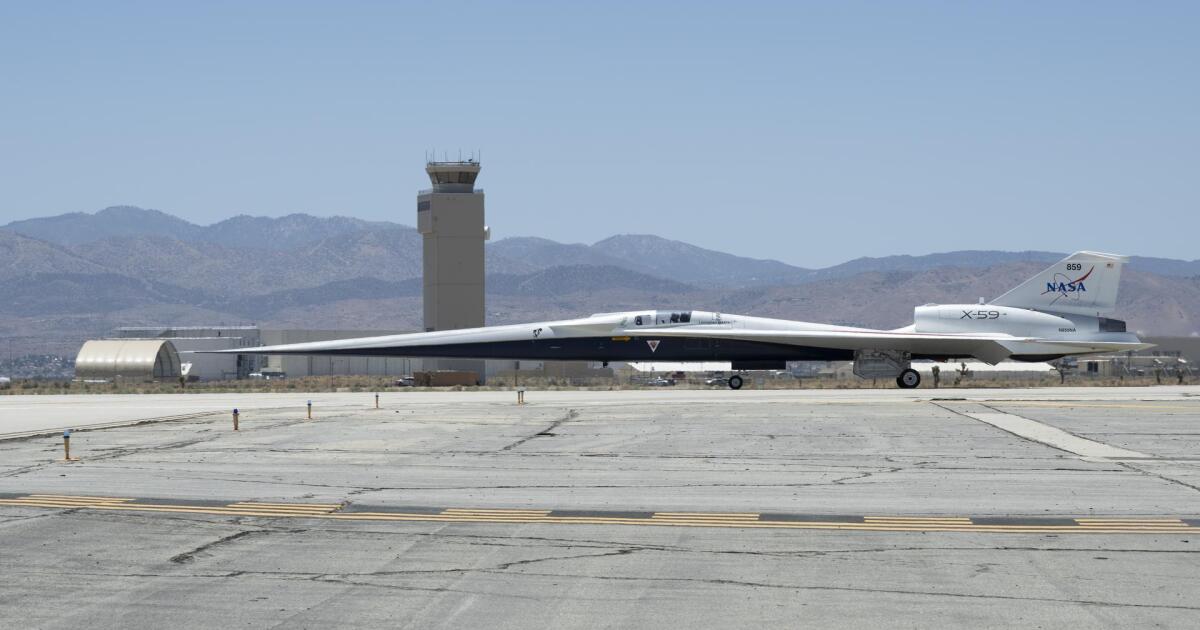NASA’s X-59 is taking slow steps towards supersonic flight, beginning taxiing tests at US Air Force Plant 42 in Palmdale, California. The final part of Phase One development, it’s the precursor to faster ground tests before the aircraft’s maiden flight.
The July 10 initial taxi tests with test pilot Nils Larson at the controls marked a major milestone as the 100-ft (30 m) demonstrator conducted its first maneuvers under its own power. These low-speed turns may not look like much, but they are a key step in determining the validity and stability of vital systems before they are subjected to actual flight testing.
According to NASA, the taxi tests will become increasingly faster, culminating in final preflight tests that will come just short of takeoff later this year.
The X-59 may look odd with its nose taking up a third of its length and a television screen instead of a front window, but it has a very serious purpose. It was built under contract by Lockheed Martin at the company’s famous yet secret Skunk Works as part of NASA’s Quiet SuperSonic Technology (Quesst) program to develop a new aircraft to help reintroduce commercial supersonic flight.
X-59
Though it incorporates the cockpit, ejector seat, and canopy from a Northrop T-38 trainer; landing gear components from an F-16 Fighting Falcon; the life support system from an F-15 Eagle; and undisclosed propulsion system parts from a U-2 Dragon Lady reconnaissance jet, it has a host of novelties. It boasts a radically new fuselage with not only the extended composite nose, but canard wings and top-mounted air intakes that are all designed to spread out and disperse upwards the infamous, window-shattering sonic boom and turn it into a thump no louder than a car door closing.
Even more important, the X-59 will be tested inside a special flight corridor beginning in 2026 that will include populated areas to gather data that will be used to rewrite current FAA flight regulations regarding civilian supersonic aircraft. This is more than a simple matter of tweaking the regs to accommodate technological improvements. It is the reversal of 1970s regulations that were deliberately written to be so hostile to supersonic airliners as to effectively ban them in US airspace due to a strange alliance between environmentalists groups who opposed supersonics on general principle and US aircraft manufacturers who resented losing the faster-than-sound race to the Anglo-French Concorde.
Source: NASA
